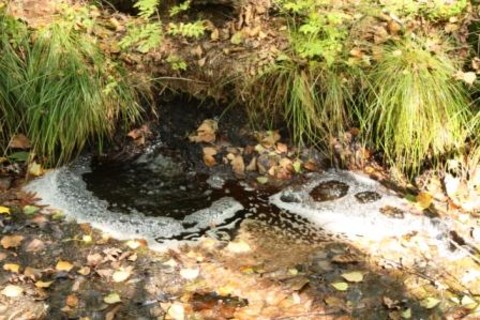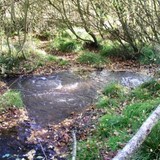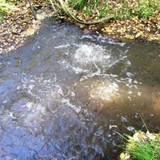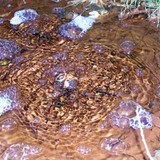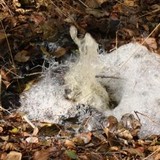Bublák
Natural whirlpools in an alder forest
are conspicuous signs of natural degassing in the Cheb Basin along the Hrzín Fault. The gas that bubbles up through the water and mud is composed of 99 % carbon dioxide. Traces of helium, among other things, were also detected. Its isotopic composition differs from air-derived helium and is evidence of the source´s great depth.
The total amount of carbon dioxide escaping in the western part of the Ohře Rift is estimated at more than 8 million m3 per year. According to some geologists, the gases are released from hot magma accumulating at the bottom of the Earth´s crust, which represents a potential risk of volcanic eruption. However, the latest geophysical investigations using seismic tomography methods did not prove the existence of a magma chamber. On the contrary, there are indications that the juvenile gases are escaping directly from the plastic asthenosphere in the upper mantle along the boundaries of geotectonic domains and that they are finding their way up through weakened zones in the Earth´s crust.
The Hájský Mill, reconstructed as a guest house and recreational facility, may be considered as a possible starting point for walks.


